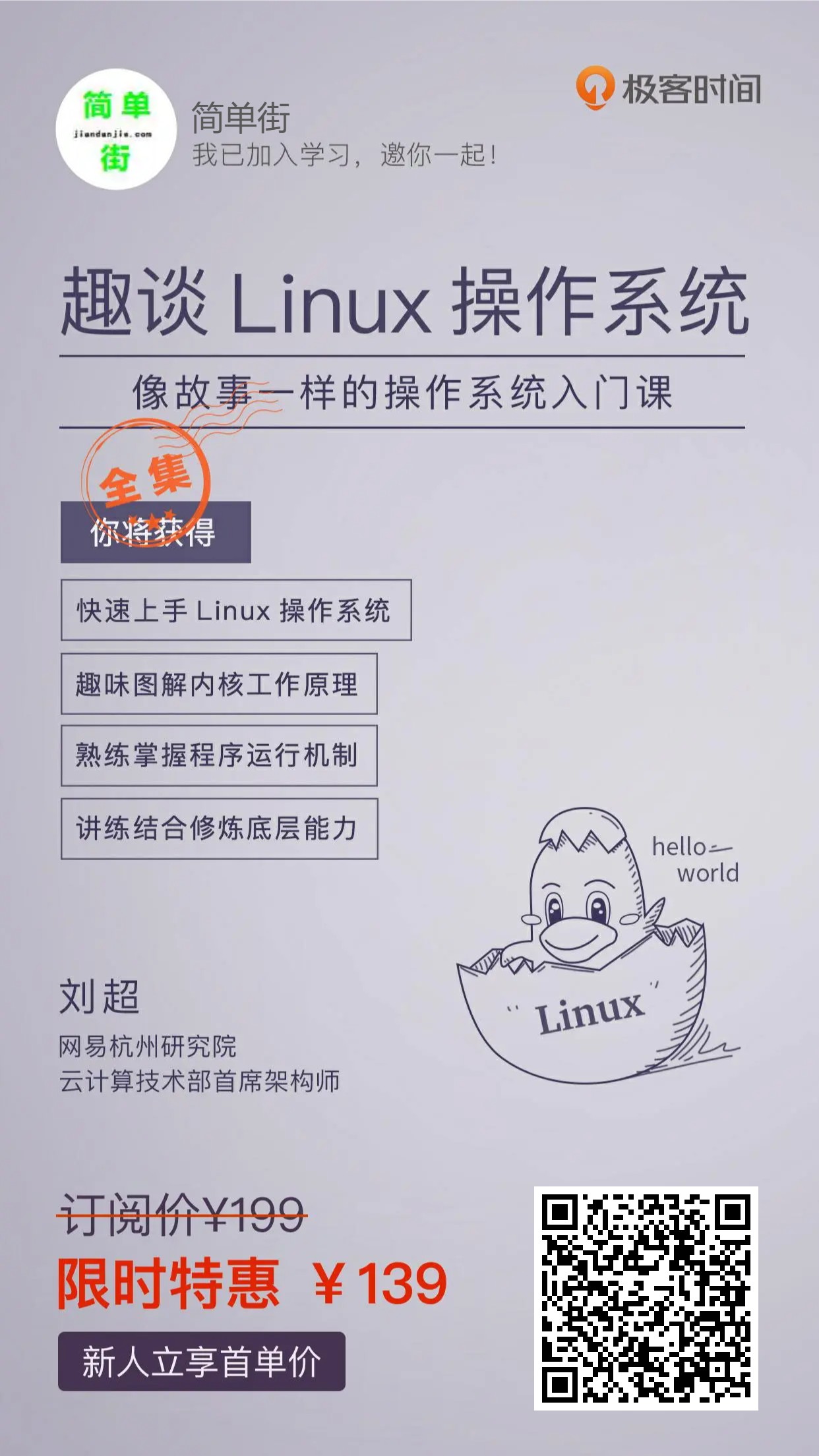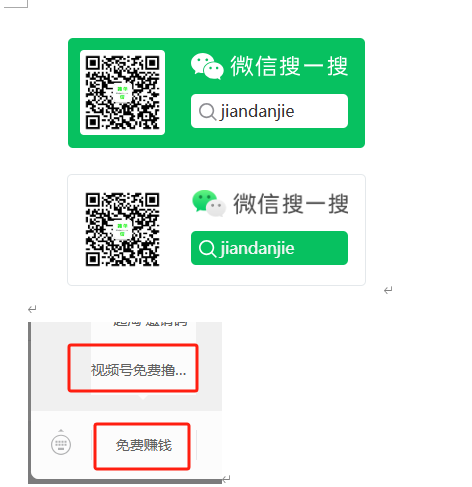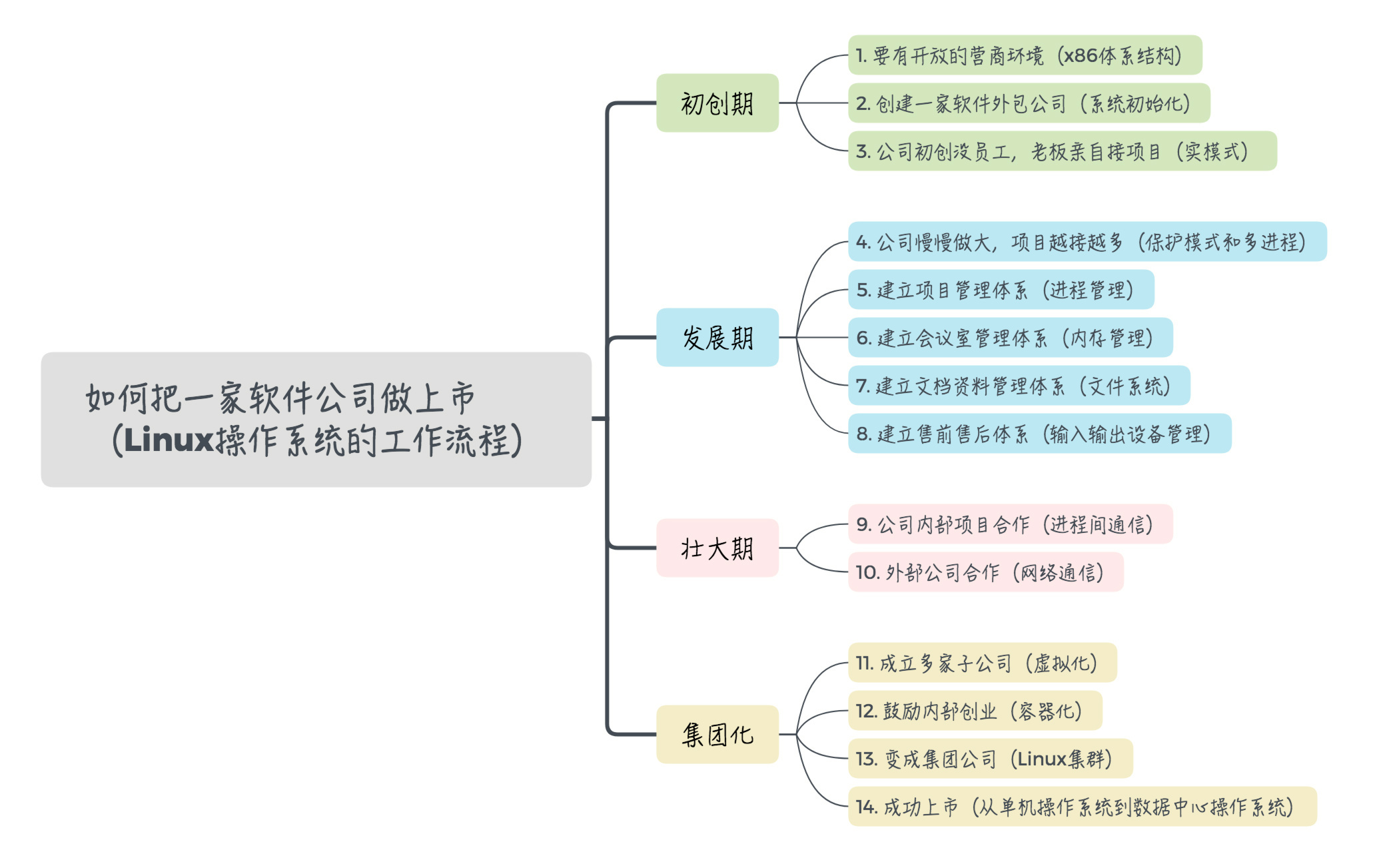趣谈Linux操作系统像故事一样的操作系统入门课share by itlife365.com 公众号 itlife365点com
看了那么多资料,为什么还是学不会操作系统?
这边
编程世界中,Linux算是主流,无数优秀的软件都运行在Linux上,比如数据 MySQL、消息队列 RabbitMQ、大数据 Hadoop、虚拟化 KVM 等等...我发现,越是高薪工作,对操作底层原理的考量越明显,以前面试我就遇到过面试官问我:Linux 环境会部署吗?你了解操作系统原理吗?如何轻松上手Linux操作系统呢?推荐你学网易云计算首席架构师刘超的《趣谈 Linux 操作系统》,已经有10000多人加入学习了,我也是其中一员,亲测讲得很好。
跟着刘超学Linux操作系统,一步步把外包公司做上市,成就感爆棚。对了,扫码免费试读《爬过这6个陡坡,你就能对Linux了如指掌》。

你将获得
课程介绍
课程目录

目录
《趣谈Linux操作系统》课程目录
入门准备篇
开篇词|为什么要学习Linux操作系统?
入学测验:你究竟对操作系统了解多少?
学习路径:爬过这六个陡坡,你就能对Linux了如指掌
核心原理篇
第一部分Linux操作系统综述
你可以把Linux内核当成一家软件外包公司的老板
快速上手几个Linux命令:每家公司都有自己的黑话
学会几个系统调用:咱们公司能接哪些类型的项目?
第二部分系统初始化
x86体系结构:有了开放的架构,才能打造开放的营商环境
从BIOS到BootLoader:创业伊始,有活儿老板自己上
内核初始化:生意做大了就得成立公司
系统调用:公司成立好了就要开始接项目
第三部分进程管理
进程:公司接这么多项目,如何管?
线程:如何让复杂的项目并行执行?
进程数据结构(上):项目多了就需要项目管理系统
进程数据结构(中):项目多了就需要项目管理系统
进程数据结构(下):项目多了就需要项目管理系统
调度(上):如何制定项目管理流程?
调度(中):主动调度是如何发生的?
调度(下):抢占式调度是如何发生的?
进程的创建:如何发起一个新项目?
线程的创建:如何执行一个新子项目?
第四部分内存管理
内存管理(上):为客户保密,规划进程内存空间布局
内存管理(下):为客户保密,项目组独享会议室封闭开发
进程空间管理:项目组还可以自行布置会议室
物理内存管理(上):会议室管理员如何分配会议室?
物理内存管理(下):会议室管理员如何分配会议室?
用户态内存映射:如何找到正确的会议室?
内核态内存映射:如何找到正确的会议室?
第五部分文件系统
文件系统:项目成果要归档,我们就需要档案库
硬盘文件系统:如何最合理地组织档案库的文档?
虚拟文件系统:文档多了就需要档案管理系统
文件缓存:常用文档应该放在触手可得的地方
第六部分输入输出系统
输入与输出:如何建立售前售后生态体系?
字符设备(上):如何建立直销模式?
字符设备(下):如何建立直销模式?
块设备(上):如何建立代理商销售模式?
块设备(下):如何建立代理商销售模式?
第七部分进程间通信
进程间通信:遇上大项目,需要项目组之间合作才行
信号(上):项目组A完成了,如何及时通知项目组B?
信号(下):项目组A完成了,如何及时通知项目组B?
管道:项目组A完成了,如何交接给项目组B?
IPC(上):不同项目组之间抢资源,如何协调?
IPC(中):不同项目组之间抢资源,如何协调?
IPC(下):不同项目组之间抢资源,如何协调?
第八部分网络系统
预习|Socket通信之网络协议基本原理
Socket通信:遇上特大项目,要学会和其他公司合作
Socket内核数据结构:如何成立特大项目合作部?
发送网络包(上):如何表达我们想让合作伙伴做什么?
发送网络包(下):如何表达我们想让合作伙伴做什么?
接收网络包(上):如何搞明白合作伙伴让我们做什么?
接收网络包(下):如何搞明白合作伙伴让我们做什么?
第九部分虚拟化
虚拟机:如何成立子公司,让公司变集团?
计算虚拟化之CPU(上):如何复用集团的人力资源?
计算虚拟化之CPU(下):如何复用集团的人力资源?
计算虚拟化之内存:如何建立独立的办公室?
存储虚拟化(上):如何建立自己保管的单独档案库?
存储虚拟化(下):如何建立自己保管的单独档案库?
网络虚拟化:如何成立独立的合作部?
第十部分容器化
容器:大公司为保持创新,鼓励内部创业
Namespace技术:内部创业公司应该独立经营
CGroup技术:内部创业公司应该独立核算成本
数据中心的操作系统:上市敲钟
实战串讲篇
搭建操作系统实验环境(上):授人以鱼不如授人以渔
搭建操作系统实验环境(下):授人以鱼不如授人以渔
知识串讲:用一个创业故事串起操作系统原理(一)
知识串讲:用一个创业故事串起操作系统原理
知识串讲:用一个创业故事串起操作系统原理
知识串讲:用一个创业故事串起操作系统原理(四)
Course Catalog of "Fun Talk about Linux Operating System"
Introduction Preparation
Opening words | Why learn Linux operating system?
Entrance Exam: How much do you know about operating systems?
Learning Path: By climbing these six steep slopes, you can become familiar with Linux like the back of your hand
Core Principles
Part 1 Overview of Linux Operating System
You can consider the Linux kernel as the owner of a software outsourcing company
Quickly get started with a few Linux commands: every company has its own jargon
Learn a few system calls: What types of projects can our company handle?
Part 2 System Initialization
X86 architecture: With an open architecture, we can create an open business environment
From BIOS to BootLoader: At the beginning of entrepreneurship, the boss takes care of the work himself
Kernel initialization: If the business grows, a company must be established
System call: Once the company is established, we need to start taking on projects
Part Three Process Management
Progress: How can the company manage so many projects?
Threads: How to parallelize complex projects?
Process Data Structures (Part 1): With multiple projects, a project management system is needed
Process data structure (middle): If there are multiple projects, a project management system is needed
Process Data Structure (Part 2): With multiple projects, a project management system is needed
Scheduling (Part 1): How to develop a project management process?
Scheduling (Middle): How does proactive scheduling occur?
Scheduling (Part 2): How does preemptive scheduling occur?
Process creation: How to initiate a new project?
Thread creation: How to execute a new sub project?
Part Four Memory Management
Memory Management (Part 1): Confidentiality for Customers, Planning Process Memory Space Layout
Memory Management (Part 2): Confidentiality for Customers, Exclusive Meeting Room for Project Teams, Closed Development
Process space management: Project teams can also arrange their own meeting rooms
Physical Memory Management (Part 1): How do conference room administrators allocate conference rooms?
Physical Memory Management (Part 2): How do conference room administrators allocate conference rooms?
User Mode Memory Mapping: How to Find the Correct Meeting Room?
Kernel state memory mapping: how to find the correct conference room?
Part 5 File System
File system: To archive project results, we need an archive repository
Hard Disk File System: How to Organize Documents in Archive Libraries Most Reasonably?
Virtual File System: If there are too many documents, an archive management system is needed
File caching: Commonly used documents should be placed within reach
Part 6 Input/Output System
Input and output: How to establish a pre-sales and after-sales ecosystem?
Character devices (Part 1): How to establish a direct sales model?
Character devices (Part 2): How to establish a direct sales model?
Block Equipment (Part 1): How to Establish an Agent Sales Model?
Block Equipment (Part 2): How to Establish an Agent Sales Model?
Part 7 Interprocess Communication
Interprocess communication: When encountering large projects, collaboration between project teams is necessary
Signal (Part 1): Project Team A has completed. How to notify Project Team B in a timely manner?
Signal (Part 2): Project Team A has completed. How to notify Project Team B in a timely manner?
Pipeline: Project Team A has completed it, how can it be handed over to Project Team B?
IPC (Part 1): How to coordinate resource competition between different project teams?
IPC (middle): How to coordinate resource competition between different project teams?
IPC (Part 2): How to coordinate resource competition between different project teams?
Part 8 Network System
Preview | Basic Principles of Socket Communication Network Protocol
Socket Communication: When encountering major projects, learn to collaborate with other companies
Socket Kernel Data Structure: How to Establish a Mega Project Collaboration Department?
Sending network packets (Part 1): How to express what we want our partners to do?
Sending network packets (Part 2): How to express what we want our partners to do?
Receiving Network Packages (Part 1): How to Understand What Our Partners Ask Us to Do?
Receiving Network Packages (Part 2): How to Understand What Our Partners Ask Us to Do?
Part 9 Virtualization
Virtual Machine: How to Establish a Subsidiary and Transform a Company into a Group?
CPU for Computing Virtualization (Part 1): How to Reuse Human Resources in a Group?
CPU for Computing Virtualization (Part 2): How to Reuse the Human Resources of the Group?
Computing virtualization of memory: how to establish a separate office?
Storage virtualization (Part 1): How to establish a separate archive for your own safekeeping?
Storage virtualization (Part 2): How to establish a separate archive for your own safekeeping?
Network Virtualization: How to Establish an Independent Collaboration Department?
Part 10 Containerization
Container: Large companies encourage internal entrepreneurship to maintain innovation
Namespace technology: Internal startups should operate independently
CGroup Technology: Internal Startup Companies Should Independently Calculate Costs
The operating system of data center: ringing the bell for market launch
Practical Lecture Series
Setting up an operating system experimental environment (Part 1): Teaching people how to fish is better than teaching them how to fish
Setting up an operating system experimental environment (Part 2): Teaching people how to fish is better than teaching them how to fish
Knowledge Storytelling: Connecting Operating System Principles with an Entrepreneurial Story (Part 1)
Knowledge Storytelling: Connecting Operating System Principles with an Entrepreneurial Story
Knowledge Storytelling: Connecting Operating System Principles with an Entrepreneurial Story
Knowledge Storytelling: Connecting Operating System Principles with an Entrepreneurial Story (Part 4)
knowledge

Fun-Talk-about-Linux-Operating-System
关注公众号 itlife365点com 学习


--END


